More entrepreneurs are preparing for growing legal weed in these United States.
And it is growing already. These buds will be for you, too, if they aren’t already. These buds aren’t legal in near as many states as Budweiser – but they will be, some day, and sooner than later. It’s inevitable, and tons, i.e., kilos, of entrepreneurial businesses are gearing up for this inevitability.

For the other buds: marijuana. Also home grown here in the US. And multi-nationally. Another good reward for a hard day’s work. And there’s already a hell of a lot more users of these buds than the other ones.
Marijuana. Pot. Weed. Grass. Cannabis. Reefer. Maryjane. Ganja. Doobie. Maui wowie. Buds.
The buds that cause less crime than alcohol, far less addiction, and don’t cost taxpayers $20 billion a year(!) to enforce its “prohibition”.
And here’s some more good news, for now: so far more than 25 per cent of the American population lives under some form of marijuana decriminalization and – despite Jeff Sessions’ claim ‘that it is “only slightly less awful” than heroin,’ and who labels cannabis a “life wrecking dependency,” weed is significantly less likely to generate addiction than alcohol, cocaine, heroin and other opioids, and nicotine. In fact one study finds that “Evidence on marijuana’s health effects is hazy at best.
One caveat: Doctors at the University of Colorado, Aurora (where the stuff’s been legal for recreational use since 2012) have identified a “mysterious illness” caused by heavy, long-term use of various forms of marijuana, manifested in nausea and vomiting, no more. The cure?
You know what is addictive, no caveats? Pizza. Chocolate. Chips. Cookies. Ice cream. French fries. Soda (but not diet soda), and on it goes. In fact a study at Yale found that up to 20% of people may suffer from food addiction and the obesity it generates.
Annual costs related to the prohibition of marijuana here in the US are one-tenth the cost of obesity - $20 billion - a lot of money, for sure, but we’re spending $210 billion on obesity health care.
Predictions run high for the inevitability of widespread legalization of marijuana use, not just for medicinal purposes, for which it provides serious aid to millions of patients, but recreationally – for which it provides not-so-serious pleasure to millions more: an estimated 25 million of us have used it in the past year – and upwards of 100 million have used it at some point in our lives.
Other surveys show that 16 million Americans use marijuana at least once a month.
This bud’s for you? 100 million weed users say, hey budtender! And it’s only the beginning…
A recent poll by CBS News found that 61 percent of Americans believe marijuana should be legal. This past November, voters in California, Massachusetts, Nevada and Maine chose to legalize it, plus, in Florida, Arkansas Montana and North Dakota, measures passed allowing pot to be used for medicinal purposes.
Now 28 states plus the District of Columbia allow legal use of medical marijuana, and 8 of them (plus D.C.) have legalized it for recreational use.
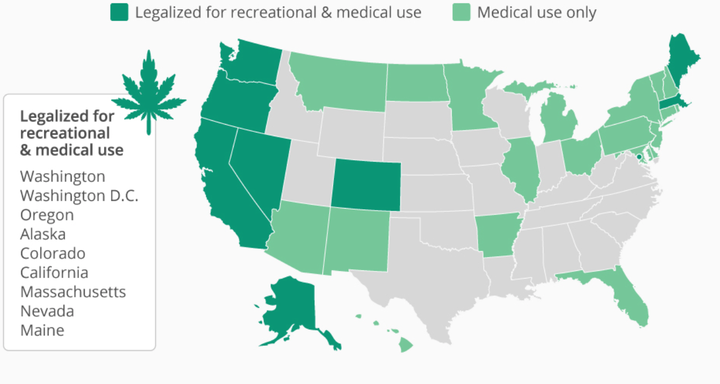
Nationwide, cannabis is already a $6 billion industry, and projections once all 50-states legalize the recreational stuff run as high as $50 billion annually.
New Jersey, for one, which legalized medicinal use of marijuana in 2010, is poised for the eminent legalization of its recreational use with the anticipated election of Philip D. Murphy (D) in November to replace Gov. Chris Christie (R), who has accused “crazy liberals” of wanting to “poison our kids” with it. After much consideration, Murphy says “… I have, without question, come to a place where I wasn’t three and a half years ago.”
Indeed - the inevitability of continuing wide spread legalization for recreational use, and his state’s anticipation of an estimated $300 million in annual revenues, instead of what the ACLU claims - that the state “wastes - more than $143 million per year to enforce our marijuana possession laws (Ibid).”
Nevada legalized recreational use of weed last November, its markets kicking in just in time for the 4th of July weekend – fireworks! - and their licensed dispensaries are running low on supplies to get high, which has moved Gov. Brian Sandoval (R!) to endorse their Department of Taxation’s “statement of emergency” allowing state officials to consider adopting an emergency marijuana regulation to alleviate the shortage.
They approved Gov. Sandoval’s endorsement unanimously, a month ago, and now anticipate $100 million in revenues from their 100 licensed growers - the first year.
Create jobs? Grow revenues for good causes? Legalize weed. Revenues Nevada collects from the 15 percent cultivation tax goes toward schools, while the 10 percent sales tax revenues go toward the state's rainy day fund, which can be used for any number of good things (ibid).
The US cannabis sector now employs between 165,000 and 230,000 full and part-time workers. “To put this in perspective, there are now more marijuana workers than there are bakers or massage therapists in the United States,” says a report from Marijuana Business Daily. It even outnumbers dental hygienists.
And coal miners.
According to Nevada’s Department of Taxation spokesperson Stephanie Klapstein, "The business owners in this industry have invested hundreds of millions of dollars to build facilities across the state. They have hired and trained thousands of additional employees to meet the demands of the market.”
And that’s just in one state… imagine …
The marijuana industry is growing so fast that if the government legalized it nationally it would outsell ice cream. In fact it already does. The report from Marijuana Business Daily estimates the current total demand for marijuana, including the black market, at $45-$50 billion. And, as noted, in legalized states, it’s already a $6 billion industry.
Annual US ice cream sales are a mere $5.1 billion.
Weed outsells Girl Scout cookies ($776 million – ibid) in the US. And get this: the Girl Scout Cookies hybrid strain of weed – including Thin Mints and Platinum Cookies – is one of the highest-rated strains around, one that will “… launch you to euphoria’s top floor where full-body relaxation meets a time-bending cerebral space, according to Leafly, “the world’s largest cannabis information resource.
Investors are responding to all of this with their dollars. And several publically traded marijuana growers are experiencing nothing short of stock bubbles (with the usual cautions implied), including Canopy Growth Corporation's (NASDAQOTH:TWMJF) share price that has risen more than 220% in the past 12 months. Medical Marijuana Inc’s. (NASDAQOTH:MJNA) stock tripled during the same period. And Aurora Cannabis' (NASDAQOTH:ACBFF) shares have soared more than 350% in the last 12 months, to name a few.
Even major corporations with no connections to weed, yet, are positioning themselves for the inevitability of legalized growing, distribution and usage, including Scotts Miracle-Gro, whose controversial CEO Jim Hagedorn has invested heavily in hydroponics and businesses that produce “… dirt, fertilizer, pesticides, growing systems, lights” – all budding supply sources for weed growers. “Invest, like, half a billion in the pot business,” he says.
And he did.
“it is the biggest thing I’ve ever seen in lawn and garden,” says Hagedorn.
All of this has opened the doors to budding ganjapreneurs who see the light at the end of the tunnel – this one a lit joint – and they are blooming all over the place. Innovative dispensary companies like publically traded Terra Tech, based in Irvine, CA, and the award-winning The Green Solution, Colorado’s leading dispensary, are investing in ideas and resources, preparing for the inevitable.
One example: into this smoke and fire jumps Doug Fyvolent, a small-business man and entrepreneur with a big, big idea. Founder of Solaridy, based in St. Petersburg, FL, Fyvolent and his team have developed exclusive aeroponic CropTowers™ (Aeroponics - the growing of plants in a container in which the roots are suspended in a nutrient mist rather than in a solution) – a system that expands growers’ production up to 3 times their current yield – in the same warehouse space – drastically reducing production costs and enhancing efficiencies multi-times over.
“It’s the next generation of cannabis growing and harvesting,” says Fyvolent. He and Solaridy were recently featured on Tampa’s ABC affiliate, WFTS (“Local grower figures out a way to grow quicker marijuana, May 20, 2017) - who made it clear that, so far, only medicinal weed from seven authorized growers is legal in Florida.
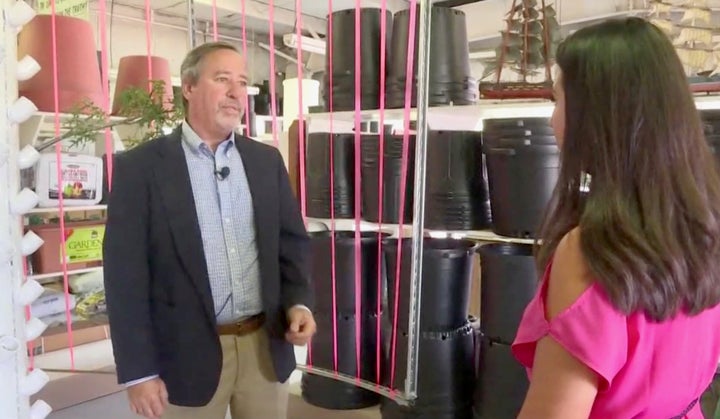
Solidary’s Doug Fyvolent with ABC Action News WFTS, Tampa, May 20, 2017, with reporter Shannon Valladolid.
“This could take pot production to a whole new level,” says the announcer, introducing the story …
“We got the idea from NASA – and made it better …!” reports Fyvolent. Disney’s “Farm of the Future” launched at EPCOT (Experimental Prototype Community of Tomorrow), in Orlando, in 1984, and was an early innovator of indoor plant growing techniques, including hydroponics – a technique that was later included in NASA’s Space Shuttle.
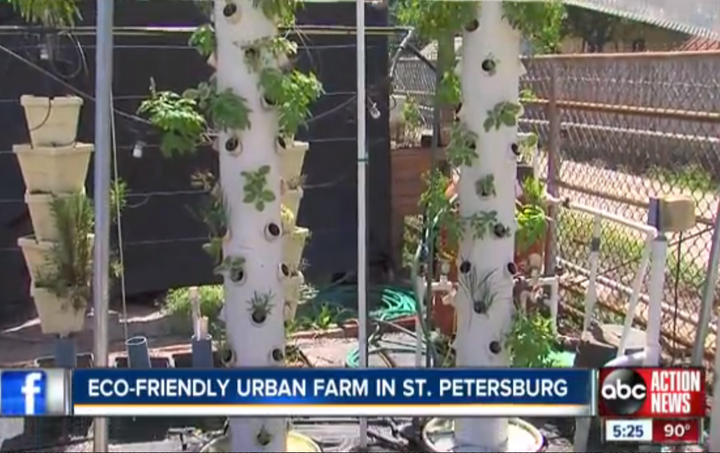
An early version of Solidary’s CropTowers(TM) as featured on WFTS, Tampa
It was under the auspices of Green City Farms (www.greencityfarms.co), a precursor of Solaridy, that CropTowers™ were first developed – for “urban farming,” to address the severe limitations of urban communities’ ability to grow green crops in crowded cities. They used recycled water and were solar powered. Solaridy significantly improved the water flow in their CropTowers™ and created a patent-pending sterilization system that prevents mildew, mold and other diseases.
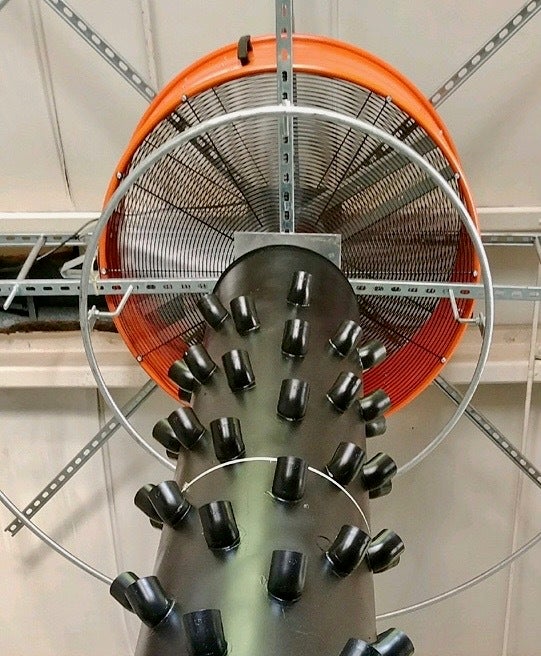
Updated version of the Solaridy’s CropTower(TM), showing the ventilation system.
Early exposure of this uniquely innovative process typically produced a single response from potential investors and grower partners, “That’s fabulous – but can it grow pot?”
So they switched gears three years ago, and launched Solaridy, dedicated to the development of what is now the most efficient, productive growing system out there. A single Solaridy’s CropTower™ takes up only 81 square feet of ground space, and after 11 days to “clove and veg,” the seedlings are nestled in a CropTower™, where they flower in 50 – 70 days. The traditional process, in the same amount of space (e.g. five 4’x4’ trays) – to plant the seeds, move them from one pot to another as they grow, and get them into a flower room where they sit for the same 50 to 70 days – ultimately produces some 10 pounds of weed.
Compare that to a single CropTower’s™ output - in 10% to 20% less time: 32 pounds!
Originally developed for large scale outdoor urban agriculture, Solaridy’s engineers, along with industry experts and IT professionals, redesigned the CropTower™ system to meet the stringent requirements necessary to meet the demand for indoor cultivation. Combining green technologies and computerized control, Solaridy developed a system with multiple redundancies to ensure that it not only outperforms current grow protocols - it is totally monitored both in house and in the cloud 24/7. Redundant systems are included (with alerts and automatic kick in provisions) throughout the system to ensure no down time during the cultivation process.
Solaridy is not licensed as of yet in Florida, so needless to say they grow no marijuana locally. But they had a highly productive four-month beta test in Colorado a couple of years ago.
Each crop tower is 10 feet tall, so you grow the stuff straight up, not seeded horizontally, on the ground, in big fields. Or gargantuan secret warehouses. Ganjantuan?
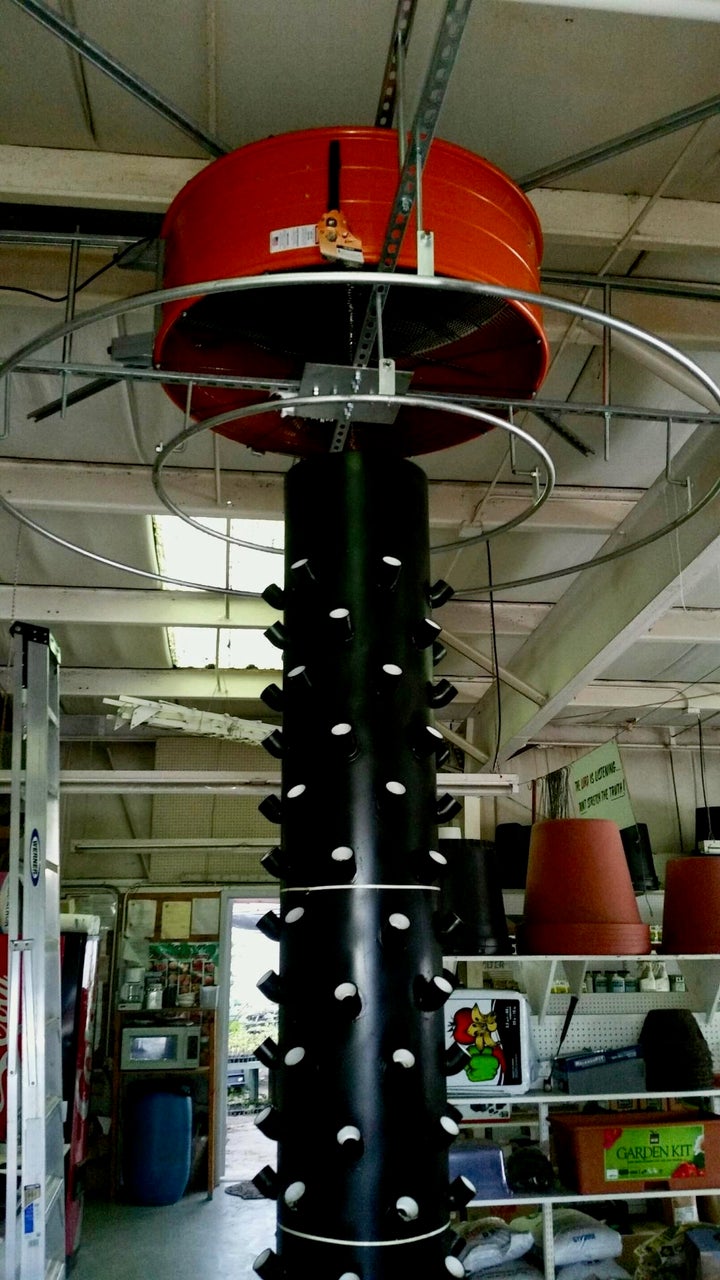
“We can maximize your existing warehouse space by going vertical!” says Fyvolent. And he ticks off the advantages … no need for grow material … minimizes human error … an 80% reduction in water … half the labor costs … half the fertilizer cost … no bugs, no pesticides.
And a very short turn around on ROI.
“Growing cannabis with our proven CropTower™ aeroponic system provides commercial growers a consistent, controlled environment to produce high yield crops while maximizing valuable floor space in any indoor growing environment. Our computer-regulated system optimizes proprietary nutrients, water and temperature to maximize production. Plants receive the precise nutrition at precisely the right time and provide real-time data in a cloud-based system for monitoring each grow remotely from anywhere.”
Taking notes?
Solaridy’s innovations could revolutionize the inevitable, expanding, booming market of legalized recreational marijuana. And they’re just one of many poised for action, and the revenues that can generate millions of jobs – and taxable monies that can be applied to all kinds of good causes.
Like they say in the Army, “At ease. Smoke ‘em if you got ‘em.”
Tim Arnold
10 August 2017
Tim Arnold is the co-author of “Nooners,” with James Patterson, just published by the Hachette Book Group.
